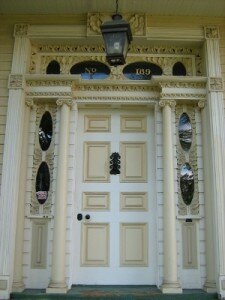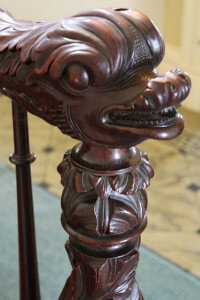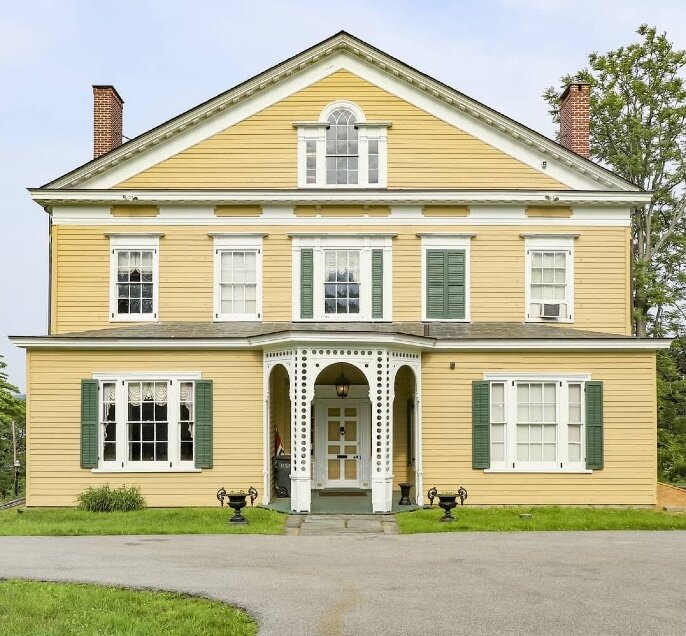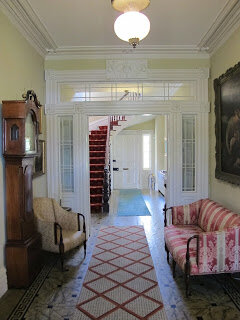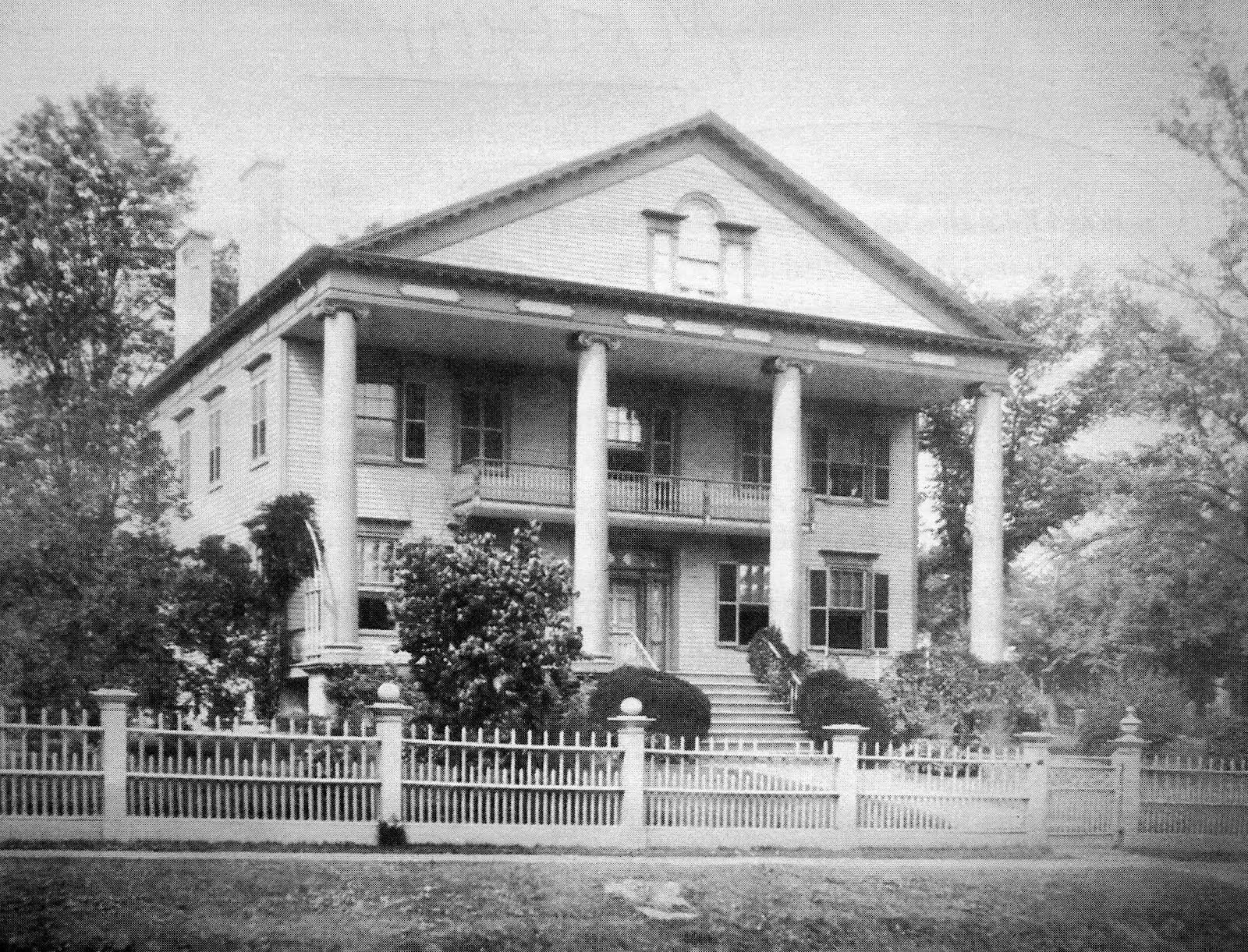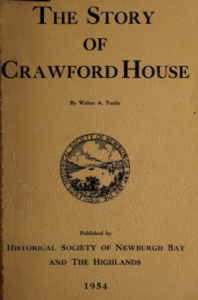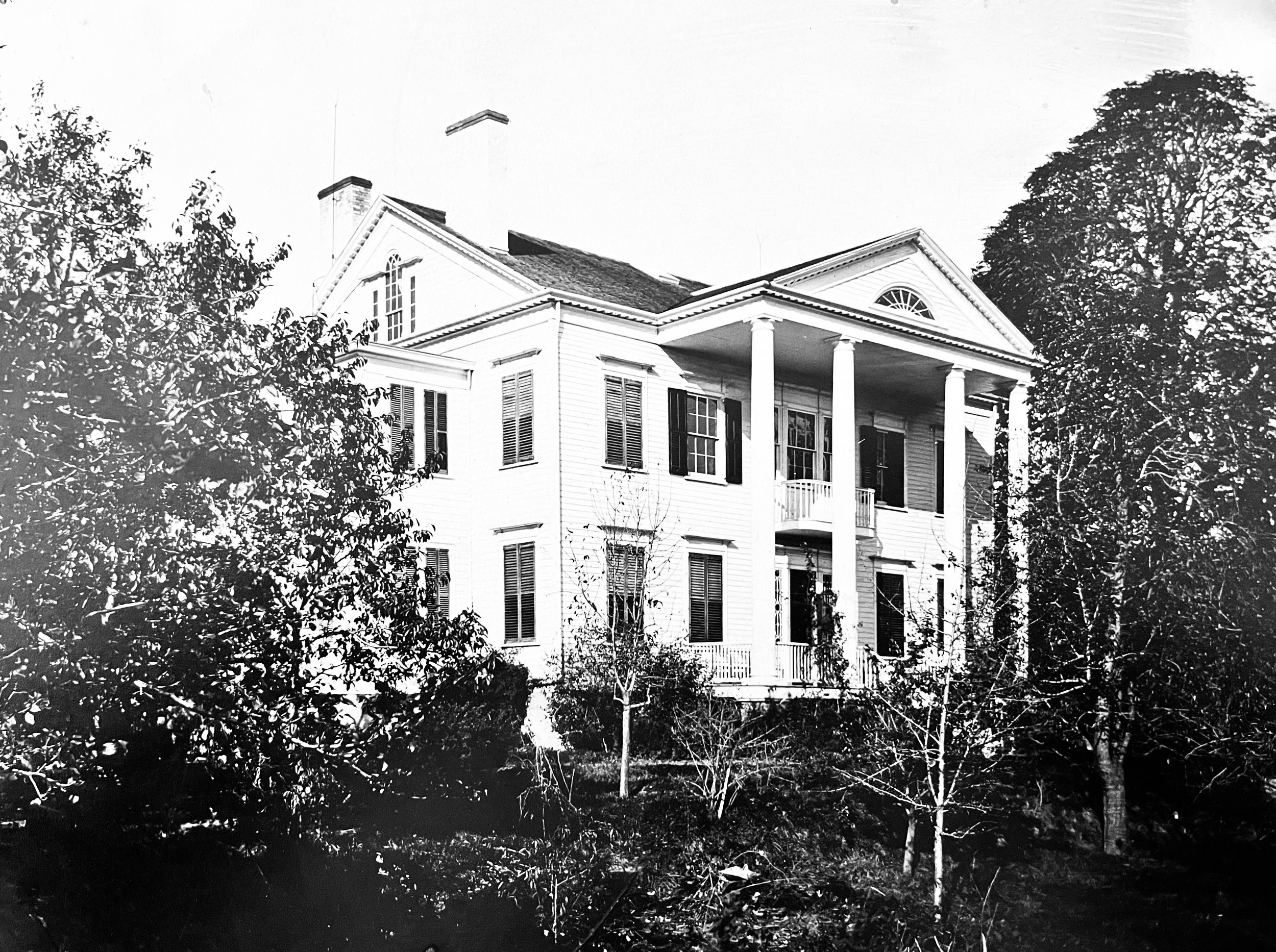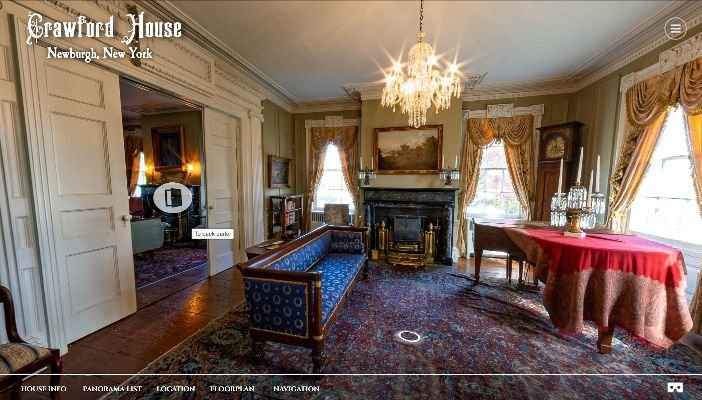The David Crawford House
Captain David Crawford, a civic leader and maritime entrepreneur, played a key role in the transition of Newburgh from a small riverside community to a thriving shipping and industrial city. His 1830 neo-classical home, situated atop 500 acres of property overlooking the Hudson River, aptly reflected his wealth and stature in the community.
This majestic house, architecturally unique in the Hudson Valley, is remarkably intact, having been little changed over the years, when it was occupied by three separate families. There is a wealth of original interior and exterior architectural detail.
The proud home features forty-foot iconic columns on the front porch and front and rear Palladian windows. Detailed woodcarving on the front door – featuring oak leaves and pineapples, symbols of hospitality – is repeated throughout the house, surrounding the entablature, the doorways and the ornate black marble fireplaces. An exquisite dolphin newel post, carved in solid mahogany, is a whimsical feature on the sweeping center hall staircase.
The House is interpreted to reflect not only the life of a wealthy 19th century family, but the rich history and traditions of Newburgh and the surrounding Hudson Valley. We maintain an impressive collection of Hudson River School paintings by artists such as Charles Winfield Tice, Thomas Benjamin Pope, Raphael Hoyle and others; an array of 19th-century New York furnishings, including a Duncan Phyfe settee and a Carman and Fancher piano manufactured in Newburgh; a collection of locally made silver and textiles; and a wonderful pocket museum of model ships from the golden age of pleasure travel and shipping on the Hudson River.
For an extensive informal tour of the Crawford House, with dozens of photos, see this 2012 blogpost from the late John Forman.
To more information on arranging a visit or to book a tour, click here.
Who Designed the Crawford House? Domestic Architecture and Building Culture on Newburgh Bay, 1754–1837
Steven Baltsas
Board member Steven Baltsas is working on contextualizing the Crawford House in a series of articles, “Who Designed the Crawford House? Domestic Architecture and Building Culture on Newburgh Bay, 1754–1837.” The Federal Style in Newburgh and New Windsor looks at the Federal style locally, epitomized by such examples as 160 Grand Street, Newburgh. Built for William and Maria Roe about 1827 (pictured above), the house introduced porticoes to Newburgh Bay.
2020 Virtual Tour
When the Crawford House was closed for safety measures during the Covid-19 pandemic, we reached out to Newburgh native Seth Colegrove (IG: @empireexplorer) to produce an interactive tour. Guests can explore the first floor of our headquarters, built in 1830. Inside, clickable info boxes relate the stories behind the Society’s collection of Hudson River School paintings and nineteenth-century decorative arts.
